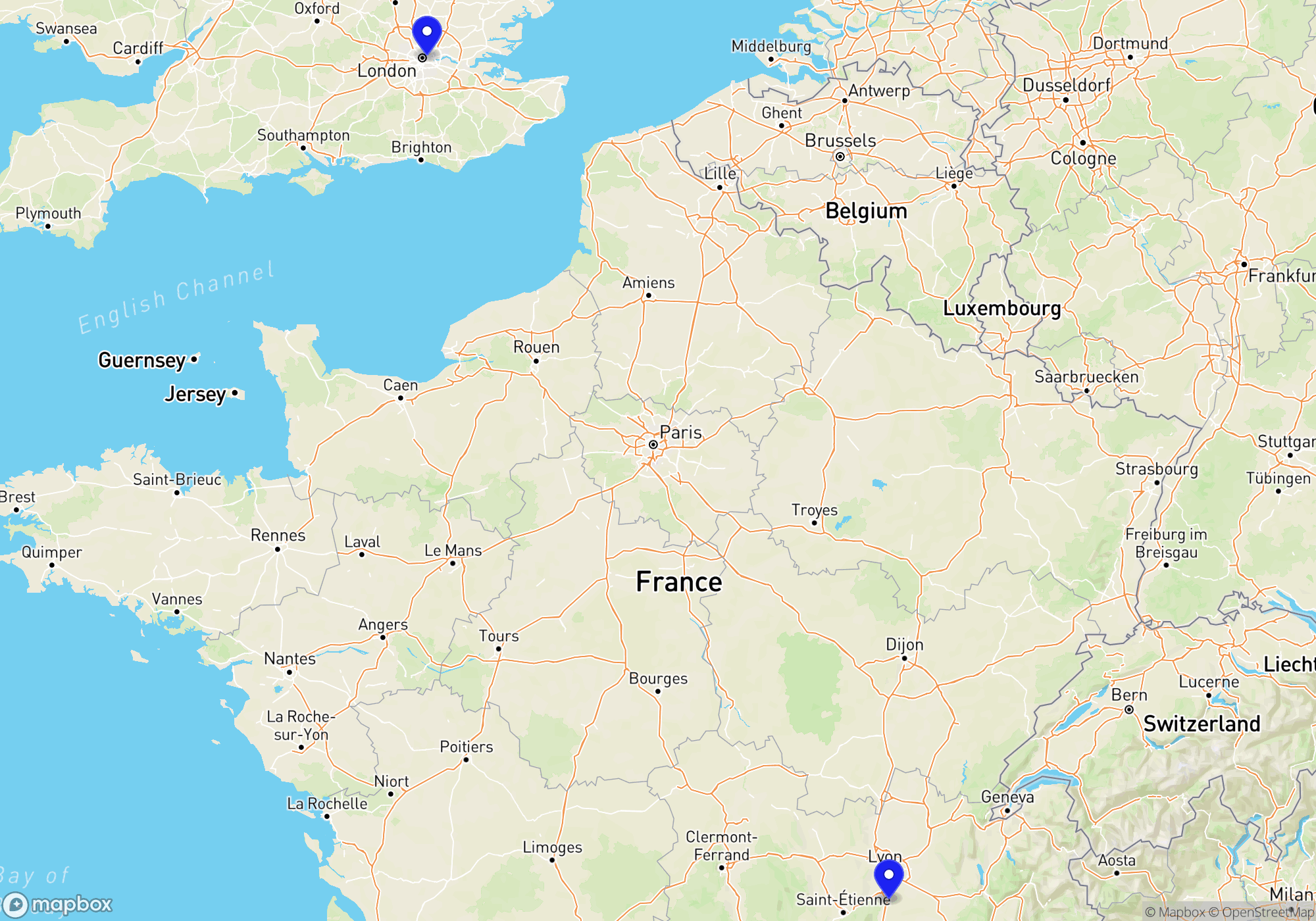
You can buy train tickets directly from the operator or through a reseller. The reseller is typically slightly more expensive (3-5%) but can provide an easier booking experience, especially if you travel with more than one operator.


These operators provide a complete journey either as a direct connection or through their partners. Even if a change of trains is involved, it’s all part of a single itinerary managed by the same train company or its partners, offering a smoother and more coordinated travel experience.
Some operators don’t run direct trains the whole way, but they serve either the departure or arrival station. In many cases, you can combine two of these operators to complete your journey by changing trains along the way. This is often a flexible and budget-friendly way to travel — especially if you’re comfortable piecing together your own itinerary.
Just keep in mind that these are separate journeys, which means a delay on the first leg could cause you to miss the second without automatic compensation or rebooking. It’s a great option for confident travelers who don’t mind a bit of extra planning.
SNCF, or Société Nationale des Chemins de fer Français, is the national railway company of France, renowned for its high-speed TGV trains. These trains offer swift and comfortable travel, equipped with amenities such as spacious seating, onboard cafés, and Wi-Fi in certain classes. SNCF trains are appreciated for their punctuality and efficiency. Customer support is accessible through various channels, including phone and online support, ensuring a smooth travel experience for passengers.
Flixbus operates under a brand known primarily for its extensive network of intercity bus routes. However, FlixTrain is the name under which they offer train services, predominantly in Germany. While their train network doesn’t directly serve the London-Vienna route, FlixTrain is notable for providing budget-friendly and straightforward rail travel options. The trains generally feature standard seating and basic amenities designed for cost-effective journeys. Customer service is facilitated through their app, website, and call centers, allowing travelers to easily manage bookings and get assistance as needed. For longer travel routes like London to Vienna, passengers would typically complement their FlixTrain journey with connections via other services in Europe.
The Interrail Global Pass is valid for traveling from London to Vienna, offering flexibility to travel across multiple countries, including the UK and Austria, but it cannot be used for domestic travel within the UK by UK residents. UK residents can’t use the Interrail Global Pass for the UK portion of the trip. The Interrail One Country Pass is not applicable for travel from London to Vienna as it only allows travel within a single country and London to Vienna requires travel through multiple countries. The Eurail Pass is valid for non-EU residents for international travel, including from London to Vienna, but as with the Interrail Pass, UK residents cannot use it for domestic travel within the UK.
Upon arriving in Vienna by train, you will find the city’s public transportation efficient and convenient. The Wiener Linien operates the public transport network, which consists of the U-Bahn (metro), trams, and buses. The U-Bahn has five lines, labeled from U1 to U6 (U5 is under construction), connecting most parts of the city. The trams, known locally as Straßenbahn, offer an extensive network and are a scenic way to travel above ground. Tickets for the U-Bahn can also be used on trams and buses, and these can be purchased at machines in the stations, via a smartphone app or at kiosks.
Taxis are readily available, and you can either hail one on the street, find them at designated taxi stands, or book via phone or taxi apps like Taxi 40100. Ridesharing services such as Uber also operate in Vienna, offering a convenient alternative to traditional taxis, although prices might vary depending on demand and route.
Keep in mind that Vienna’s public transportation system is integrated, which means tickets are valid across all modes of transport, facilitating seamless travel throughout the city. Plan to use a travel card or a Vienna City Card for unlimited travel if you are staying for several days, as it generally offers better value.
Vienna, as a major European rail hub, offers numerous domestic and international train connections. Domestically, key connections include Vienna to Salzburg, a journey that typically takes about 2.5 hours with frequent Railjet services offered by ÖBB, the Austrian Federal Railways. This route is popular for both business and leisure travelers due to its speed and comfort. Another common domestic route is from Vienna to Graz, taking approximately 2.5 hours, providing an essential link to the Styrian capital with regular Railjet and regional train services.
Internationally, Vienna is well-connected to several European cities. One of the most popular routes is Vienna to Budapest, which takes about 2.5 to 3 hours. These services are frequently run by both ÖBB and Hungarian Railways (MÁV), offering comfortable and efficient travel between the two capitals. Vienna to Prague is another notable route, taking roughly 4 hours, with several trains operated daily by both ÖBB and Czech Railways (ČD).
Travelers can also reach Germany efficiently with the Vienna to Munich connection, typically taking around 4 hours, featuring regular Railjet services. Additionally, Vienna to Zurich offers a scenic trip through the Austrian and Swiss Alps, usually taking about 8 hours, with direct connections available daily.
These connections make Vienna a strategic point for exploring Austria and neighboring countries by train, taking advantage of Europe’s extensive and efficient rail network.
The best time to visit Vienna is generally during the late spring and early fall, specifically from April to June and September to October. During these months, the weather is mild and pleasant, making it ideal for exploring the city. Prices for accommodations and travel tend to be more reasonable than during the high summer season. In spring, you can enjoy blooming parks and gardens, while fall presents beautiful autumn colors in the city’s many green spaces. Both seasons offer a variety of cultural activities, with spring featuring the Vienna Festival in May, showcasing music, theatre, and dance performances, and fall having the Vienna Wine Hiking Day in late September. Arriving by train during these times offers scenic views of the Austrian countryside and a relatively less crowded travel experience compared to the peak summer months. Summer in Vienna, though vibrant with events like the Film Festival at Rathausplatz, can be quite crowded and more expensive. Winter time, especially around December, offers enchanting Christmas markets, but the weather is typically cold, and some outdoor attractions may be less enjoyable.
When traveling from London to Vienna by train, consider packing comfortable clothing and a travel pillow for a pleasant journey, especially for overnight travel. Bring snacks, a refillable water bottle, and entertainment, such as books or downloaded shows. Ensure you have your passport, as you’ll be traveling internationally, and any necessary visas depending on your nationality. A printed or digital copy of your train tickets and accommodation booking should be on hand. Since Austria uses the Type F European plug, a universal power adapter is necessary to charge your devices. Don’t forget your phone and charger, headphones, toiletries, and any medications you may need. A small backpack or daypack can be useful for carrying essentials when exploring Vienna. Depending on the season, appropriate clothing such as warm layers or waterproof garments will help, as Vienna can have variable weather. A compact umbrella and a travel guide or city map can be useful while navigating the city. For added convenience, a credit or debit card, some cash in euros, and any local transport or attraction tickets bought in advance will make your travel smoother.
Some content on this website is created with the assistance of generative AI. To ensure factual accuracy, all information is reviewed by an expert in European train travel. However, despite careful verification, occasional errors or updates may not be immediately reflected. © 2025 Green Company. All rights reserved.